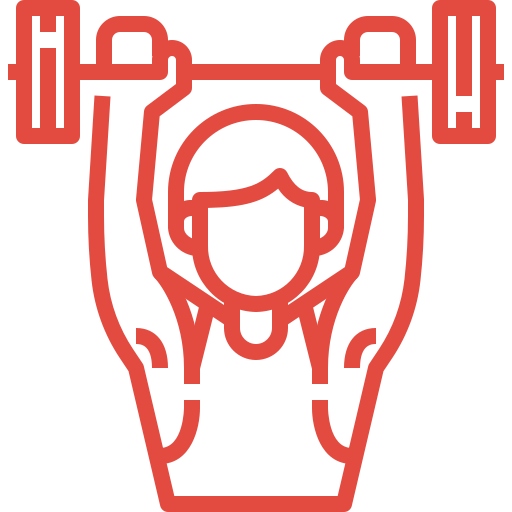The intersection of fitness instruction and Exposure and Response Prevention (ERP) for OCD recovery warrants careful examination. Evidence suggests that physical activity can enhance mood and reduce anxiety, which may facilitate more effective ERP sessions. The release of endorphins during exercise can alleviate distress, making it easier for individuals to confront their fears. Understanding how to integrate fitness into ERP programs could transform the therapeutic landscape for those struggling with OCD. What specific strategies might yield the most significant benefits?
Key Takeaways
- Regular exercise releases endorphins, improving mood and reducing anxiety, making ERP sessions more manageable for individuals with OCD.
- Fitness accomplishments boost confidence, empowering individuals to confront fears and engage in ERP more effectively.
- Physical activity fosters emotional resilience, enhancing motivation and perseverance in facing anxiety-provoking situations during ERP.
- Group fitness activities promote social connections, reducing feelings of isolation and providing emotional support throughout the recovery process.
- Integrating exercise with ERP can lead to more positive outcomes, as physical strength translates to mental fortitude in overcoming OCD challenges.
Understanding ERP and Its Role in OCD Treatment
While many therapeutic approaches exist for treating obsessive-compulsive disorder (OCD), Exposure and Response Prevention (ERP) stands out as a cornerstone method. Research consistently indicates that ERP is effective for OCD treatment, since it directly addresses the debilitating fears and compulsions that define the disorder. By gradually exposing individuals to anxiety-provoking situations while preventing their usual compulsive responses, ERP fosters resilience and reduces avoidance behaviors. This evidence-based approach not only promotes emotional regulation but also enhances one’s sense of belonging to a community of individuals maneuvering through similar struggles. The compassionate framework of ERP encourages individuals to confront their fears, ultimately leading to a more fulfilling life. Consequently, the question of “is ERP effective for OCD treatment?” is answered affirmatively through extensive clinical studies and patient testimonials.
The Benefits of Fitness Instruction for Mental Health
Fitness instruction offers a myriad of benefits that extend beyond physical health, greatly impacting mental well-being. Engaging in structured fitness programs can foster a supportive community and enhance emotional resilience. The following points highlight key benefits:
- Enhanced Mood: Regular physical activity releases endorphins, reducing feelings of anxiety and depression.
- Improved Self-Esteem: Achievements in fitness can boost confidence and promote a positive self-image.
- Stress Reduction: Exercise serves as a healthy outlet for stress, providing a break from daily pressures.
- Social Connection: Group fitness classes encourage relationships, helping individuals feel a sense of belonging.
How Physical Activity Enhances ERP Outcomes
Physical activity has been shown to considerably enhance the outcomes of Exposure and Response Prevention (ERP) therapy, a cornerstone treatment for Obsessive-Compulsive Disorder (OCD). Engaging in regular exercise can lead to improved mood, reduced anxiety levels, and increased resilience, all of which are essential for individuals undergoing ERP. Research indicates that physical activity promotes the release of endorphins, which can alleviate feelings of distress that often accompany OCD symptoms. In addition, exercise fosters a sense of accomplishment and empowerment, helping individuals feel more in control of their recovery journey. By integrating physical activity into their routine, those in ERP therapy may find enhanced motivation and greater success in facing their fears, ultimately leading to more effective outcomes. Is ERP effective for OCD treatment? The evidence suggests it can be, especially when complemented by fitness.

Integrating Fitness Into ERP Programs for OCD Recovery
Integrating structured fitness routines into Exposure and Response Prevention (ERP) programs can greatly enhance the therapeutic process for individuals with Obsessive-Compulsive Disorder (OCD). This integration offers multiple benefits, fostering a holistic approach to treatment. Key aspects include:
- Reduction of Anxiety: Physical activity can lower anxiety levels, making ERP sessions more manageable.
- Improved Mood: Regular exercise releases endorphins, contributing to a more positive mindset during recovery.
- Increased Resilience: Building physical strength can translate to mental fortitude, empowering individuals to confront their fears.
- Enhanced Social Connections: Group fitness activities encourage a sense of community, reducing feelings of isolation often experienced by those with OCD.
In considering “Is ERP effective for OCD treatment?”, the incorporation of fitness may enhance these outcomes, ultimately promoting a more effective recovery journey.
Real-life Success Stories: Fitness and ERP in Action
While many individuals with Obsessive-Compulsive Disorder (OCD) face significant challenges in their recovery journey, numerous success stories illustrate how combining fitness with Exposure and Response Prevention (ERP) can lead to transformative outcomes. For instance, a young adult reported that integrating regular exercise into their ERP sessions helped reduce anxiety levels, making exposure tasks more manageable. Another individual found that group fitness classes fostered a sense of community, providing emotional support alongside therapeutic practices. Research supports these anecdotes, indicating that physical activity enhances mood and resilience, thereby improving the efficacy of ERP. Consequently, as these stories reveal, fitness not only complements ERP but also cultivates belonging, ultimately raising the question: Is ERP effective for OCD treatment?
Frequently Asked Questions
How Long Does ERP Treatment for OCD Typically Last?
Typically, ERP treatment for OCD lasts between 12 to 20 sessions, spanning several weeks to months. Individual progress and specific needs may influence the duration, emphasizing the importance of personalized approaches in effective treatment.
Can ERP Be Combined With Medication for OCD?
ERP can indeed be combined with medication for OCD, as studies indicate that this integrated approach may enhance treatment efficacy. This combination allows individuals to experience more thorough relief from symptoms, fostering a greater sense of belonging and recovery.
What Are Common Misconceptions About ERP for OCD?
Common misconceptions about ERP for OCD include beliefs that it is solely about exposure, lacks scientific backing, or is too distressing. In reality, ERP is a structured, evidence-based approach designed to foster long-term recovery and coping strategies.
Is ERP Suitable for All Types of OCD?
ERP is generally suitable for various OCD types, but individual responses may vary. Tailoring the approach to specific symptoms and personal experiences is essential for maximizing effectiveness, ensuring compassionate treatment that fosters a sense of belonging and understanding.
How Do I Find a Qualified ERP Therapist?
To find a qualified ERP therapist, individuals should seek recommendations from healthcare providers, check online directories, and verify credentials. It’s crucial to confirm the therapist has experience specifically in treating OCD through evidence-based approaches.
Conclusion
Incorporating fitness instruction into Exposure and Response Prevention (ERP) for OCD recovery presents a promising approach to enhance therapeutic outcomes. The physiological and psychological benefits of regular physical activity can considerably reduce anxiety and improve mood, facilitating a more effective ERP experience. By fostering resilience and creating supportive social networks, fitness not only complements the ERP process but also empowers individuals on their journey to recovery. Consequently, integrating fitness into treatment protocols may lead to more sustainable and impactful results.
You May Also Like to Read:

